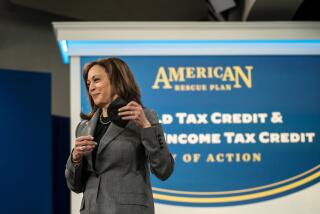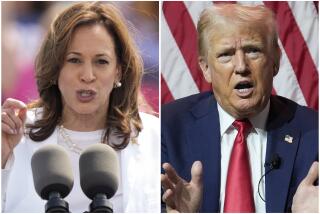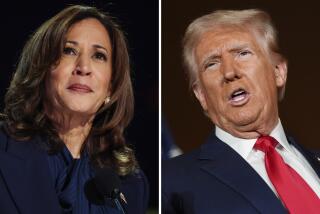Analysis finds Herman Cain’s 9-9-9 plan would raise taxes for most
- Share via
If Herman Cain’s 9-9-9 tax plan were in effect today, the poorest 60% of taxpayers would pay an extra $2,000 while the richest 1% would get a $210,000 break, according to an analysis by Citizens for Tax Justice, a left-leaning think tank.
Cain’s plan would replace much of the existing tax code with a 9% individual income tax, a 9% business tax and a 9% national sales tax.
According to the analysis, all three of the tax types included in Cain’s plan would disproportionately impact lower-income Americans.
The 9% individual income tax would give the richest Americans -- who currently pay a tax rate of about 35% -- a break of almost $210,000 a year. But for the poorest 20% of taxpayers, Cain’s proposed income tax change would mean an increase of $418 a year, the analysis found.
Another analysis by Edward D. Kleinbard, a USC law professor, estimated that a family with wage income of $120,000 in 2010 would have paid about $541 less under Cain’s plan, while a family that earned $50,000 would have paid about $4,800 more.
“That’s an extraordinarily large tax increase as a percentage of income,” Kleinbard wrote.
Cain has argued that the tax on income would be offset by the tax break that wage-earners would receive from abolishing the payroll tax.
But Citizens for Tax Justice suggests that the 9% business tax would effectively become a new form of payroll tax. The business tax would apply only to a company’s revenue after investments, purchases and dividends paid to shareholders.
“As a result, it appears there would be nothing left of a business’s revenue to tax other than the revenue going towards wages,” the group wrote in a summary of its findings. “In other words, the 9% ‘business flat tax’ under Cain’s plan actually seems to be a payroll tax.”
According to the analysis, the business tax portion of Cain’s plan would mean a $7,663 break for the richest 1% of Americans. It would cost the poorest 60% about $1,376.
The 9% national sales tax would again cost poorer Americans more, the analysis said, because the poor tend to spend all their money while the rich save much of theirs.
More to Read
Inside the business of entertainment
The Wide Shot brings you news, analysis and insights on everything from streaming wars to production — and what it all means for the future.
You may occasionally receive promotional content from the Los Angeles Times.










